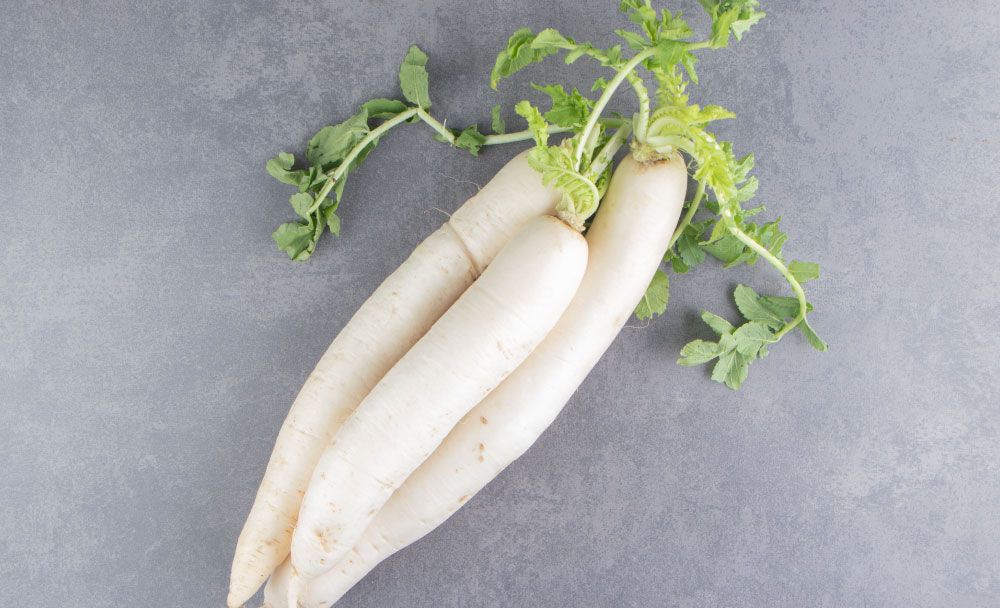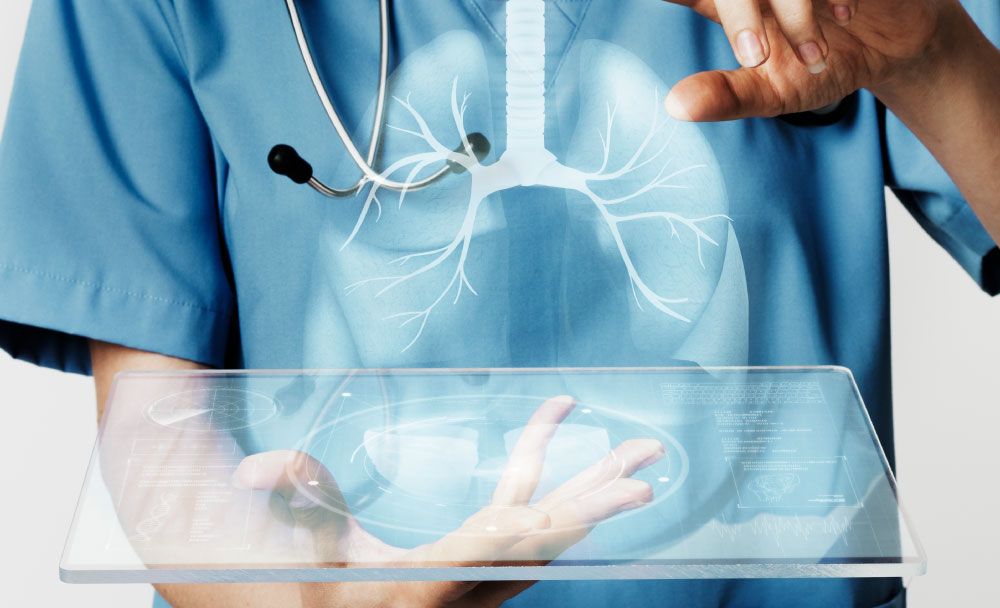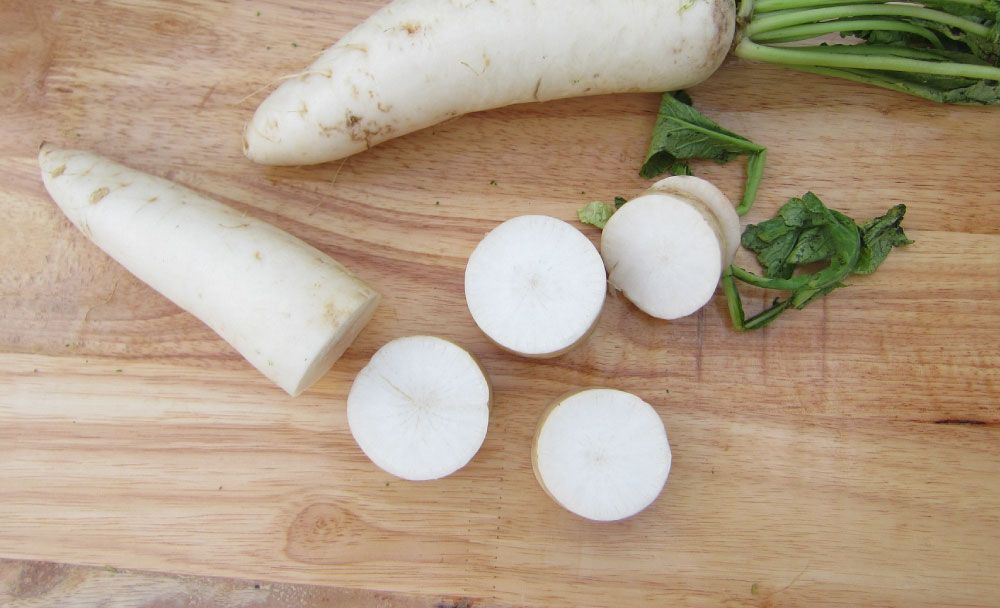
Raphanus sativus (Radish) belongs to the Brassicaceae family and is a widely consumed root vegetable all around the world. The nutritional and medicinal values of radishes have been proven by several types of research.
Radish or Raphanus sativus belongs to the Brassicaceae family. It is a root vegetable that has been widely consumed for its nutritional and medicinal properties.[1]
Ayurveda treats radish or Moolaka as a drug which is said to be a Katurasa Pradhana Ahara, has Rooksha (making dry), Ushna (hot potency), Laghu (lightness) properties, and is easily available among all other drugs.[2]
With all these properties it is thought to keep the Shareera, Dosha, and Dhatu in a healthy normal state.[2]
Folk medicine shows the use of extracts prepared from the aerial and underground parts of radishes being used in the treatment of stomach disorders, urinary infections, hepatic inflammation, cardiac disorders, and ulcers.[1]
In this blog, we will explore the nutrition facts and benefits of radish and share some tips on how to use it.
Nutrition Facts
Enlisted below are the nutritional facts and content of radish:
| Nutrient | Radish (root) mg/100g | Radish (leaves) mg/100g |
|---|---|---|
| Fat | 70 | 370 |
| Carbohydrates | 3030 | 4040 |
| Fibre | 320 | 610 |
| Potassium | 380 | 495 |
| Calcium | 148 | 752 |
| Vitamin C | 38.8 | 38.6 |
| β-carotene | NA | 3.96 |
Radish Benefits
All the radish benefits are the virtue of the presence of various nutrients like potassium, calcium, vitamin C, and fiber. Let’s explore the many radish benefits, including white radish benefits, as listed below.
1. Antioxidant Effects
Primary benefit: The antioxidant activity of radishes lies mainly in their leaves and sprouts since they possess a higher radical scavenging ability confirmed in in-vitro and in-vivo research. [3]
Secondary benefit: Hence, radish leaves and sprouts may play a significant role in preventing oxidative stress-related diseases.[3]
2. Aids in Skin Disorders
Primary benefit: The detoxifying and anti-carcinogenic actions of radish seeds help in the management of Switra or Leucoderma.[2] Radishes as a whole can also be taken to aid the treatment of Leucoderma.[2]
Secondary benefit: The high water content in radishes helps in maintaining healthy moisture levels in the skin.[2] Due to their disinfectant properties, radishes also help clear up skin disorders like dry skin, rashes, and cracks.[2]
3. Supports Digestive Health

Primary benefit: The benefits of eating radish also include alleviating several stomach and intestinal disorders.[2] Radish benefits include regularising bowel movement, therefore alleviating constipation, and diarrheal problems.[2]
Secondary benefit: Radishes are also beneficial in alleviating other digestive disorders caused by bile duct problems or loss of appetite.[2]
4. Enables Weight Management
Primary benefit: Radish has a high fiber content and low glycemic index, which means that they increase regular bowel movements.[2] This increases metabolism and helps in weight loss.[2]
Secondary benefit: Radishes are a low-calorie root vegetable.[2] The high roughage and high water content, and the presence of vitamin C also enable weight loss.[2]
5. Hepatoprotective Effects
Primary benefit: In Ayurveda, radish benefits extend to the liver or Yakrit.[2] Radishes are beneficial for the normal functioning of Yakritand Pittasaya (gallbladder) functions.[2] Therefore, it is extremely useful in treating kamala (jaundice).[2] Due to its Leghana and Sodhana Guna, otherwise known as the detoxification action, it helps normalize the bilirubin levels and stabilizes the bile production levels.[2]
The benefits of radish juice include hepatoprotective properties.[1]
Secondary benefit: Due to its Sodhana Guna or detoxification properties, radishes can also purify the blood and help eliminate toxins and other waste materials.[2]
6. Alleviates Respiratory Disorders

Primary benefit: In Swasanapadha or respiratory disorders, radish acts as an expectorant which can be attributed to its hot potency or Ushna guna.[2] This helps in curing Kaphaja Kasa and other Kapha Dosha-associated disorders such as bronchitis, asthma, etc.[2]
Secondary benefit: Radish is also known to have an anti-congestive action.[2] This decreases the congestion of the respiratory system due to the irritations of the nose, throat, wind-pipe, and lungs. It also enables the elimination of excessive mucus from the respiratory tract.[2]
7. Anti-diabetic Effects
Primary benefit: The various properties of radishes impact blood sugar levels by regulating the absorption of sugars into the bloodstream.[2]
Secondary benefit: Radish has a low glycemic index, therefore, diabetic patients don’t have to worry about sudden drops in sugar levels while eating.[2]
8. Aids In Cardiovascular Health
Primary benefit: Many heart-related disorders can be relieved, thanks to the detoxification properties of radish, i.e., the Leghana and Sodhana Guna.[2] This property helps remove all obstacles in the blood vessels or the dhamanies, ensuring a happy heart.[2]
Secondary benefit: Studies have shown radish is a great source of anthocyanins.[2] Anthocyanins reduce the occurrence of cardiovascular diseases and contain anti-inflammatory properties.[2]
9. Regulates Blood Pressure
Primary benefit: In Raktachapa (Blood Pressure), radish being a Katurasa Pradhana Ahara, helps normalize the blood pressure by removing all obstacles throughout the pathway.[2]
Secondary benefit: The presence of potassium in radish interacts with the arterial supply of vascular beds, and relaxes the blood vessels, therefore, increasing the blood flow and reducing the blood pressure.[2]
10. Anti-cancer Effects
Primary benefit: In Ayurveda, radish (Moolaka) due to its Kapha – Medoharaguna, acts as a detoxifier.[2] It is rich in vitamin C, folic acid, and anthocyanins.[2] These nutrients help combat different types of cancers, particularly colon, kidney, intestinal, stomach, and oral cancer.[2]
Secondary benefit: The isothiocyanates found in radishes have a major impact on the genetic pathways of cancerous cells.[2] They have the ability to alter the pathways to an extent that causes cell death and prevents the cancerous cells from reproducing.[2]
How To Consume Radish

- In Ayurveda, depending on the condition radish is meant to alleviate, it can be consumed as juice (Swarasa), oil (Taila), soup (Yusha), or ash (Kshara).[2]
- Benefits of radish leaves and sprouts can be leveraged when eaten raw as part of salads.[3]
- Roots are also cooked or salted together with other vegetables.[3]
- Radish seeds can be powdered to combine with vinegar or ginger juice and applied to the skin with white patches.[2]
FAQs on Radish
1. What are some of the radish benefits with respect to weight loss?
Yes, radish health benefits include effective weight management. Radish has a high fiber content and low glycemic index, which means that they increase regular bowel movements.[2] This increases metabolism and helps in weight loss.[2]
2. How does radish help with heart health?
Many heart-related disorders can be relieved, thanks to the detoxification properties of radish, i.e., the Leghana and Sodhana Guna.[2] This property helps remove all obstacles in the blood vessels or the dhamanies, ensuring a happy heart.[2]
3. What are radish health benefits with respect to the skin?
The detoxifying and anti-carcinogenic actions of radish seeds help in the management of Switra or Leucoderma.[2] Radishes as a whole can also be taken to aid the treatment of Leucoderma.[2]
Benefits of radish juice when combined with vinegar or ginger juice include relief for white patches on the skin.[2]
4. How can radish be consumed?
In Ayurveda, depending on the condition radish is meant to alleviate, it can be consumed as juice (Swarasa), oil (Taila), soup (Yusha), or ash (Kshara).[2] Leaves and sprouts are usually eaten raw as part of salads.[3] Roots are also cooked or salted together with other vegetables.[3] Radish seeds can be powdered to combine with vinegar or ginger juice and applied to the skin with white patches.[2]
Conclusion
Radish is a nutritious and versatile vegetable that offers many health benefits. It is high in fiber, vitamin C, and potassium. Radish health benefits include supporting digestive health, boosting the immune system, reducing inflammation, promoting healthy skin, etc.
With so many benefits, radish is a delicious and healthy addition to any diet for a healthy lifestyle.
Disclaimer: The information mentioned here is for educational purposes only and is not intended to be an alternative to medical treatment by a medical practitioner. Please consult a professional medical practitioner before any dietary modifications.
References:
- Deciphering the Nutraceutical Potential of Raphanus sativus—A Comprehensive Overview
- A SAFE BODY THROUGH MOOLAKA –RAPHANUS SATIVUS LINN
- Nutritional and phytochemical characterization of radish (Raphanus sativus): A systematic review


















